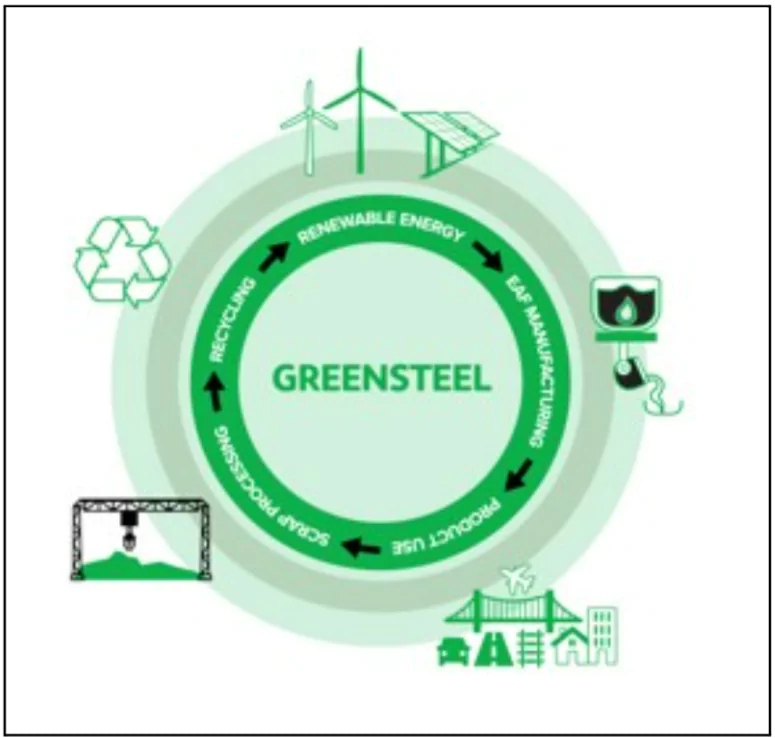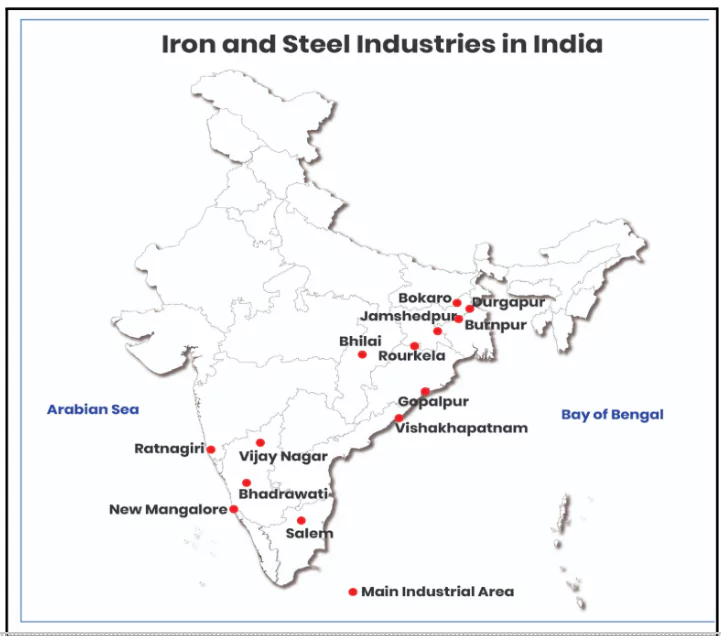The Ministry of Steel is developing the ‘Green Steel Mission’ to decarbonize the steel industry and support India’s net-zero emission goals.
- It includes initiatives such as the Production-Linked Incentive (PLI) Scheme for Green Steel, renewable energy incentives, and mandates for government agencies to procure green steel.
About Green Steel
- Green steel is steel manufactured through eco-friendly and sustainable practices.
- It’s done by using energy from renewable sources, creating less carbon dioxide, and managing waste better.
|
Enroll now for UPSC Online Classes
About the Green Steel Mission

- The Ministry of Steel is preparing the ‘Green Steel Mission’ with an estimated cost of Rs 15000 Crore for helping the Steel Industry.
- Objective: The mission aims to decarbonize the steel sector and align it with India’s net-zero emission target by 2070.
- Key Components of the mission :
- Production-Linked Incentive (PLI) Scheme for Green Steel:
- Encourages the production of green steel.
- Attracts investments to boost domestic specialty steel manufacturing.
- Aims to reduce reliance on imports.
- Incentives for Renewable Energy:Promotes the use of renewable energy in steel production and helps to reduce the carbon footprint of the steel industry.
- Mandates for Government Agencies: Requires government agencies to procure green steel, driving demand and supporting sustainable practices.
About the Steel Sector in India

- Steel is an alloy of iron and carbon containing less than 2% carbon and 1% manganese, along with small amounts of silicon, phosphorus, sulfur, and oxygen.
- Higher carbon content results in cast iron.
- Production Capacity: India’s crude steel capacity reached 179.5 million tonnes in 2023-24.
- India is the second-largest producer of steel globally, following China.
- Private Sector Dominance: The private sector contributes approximately 83% of India’s total crude steel production.
- Major Steel-Producing States: Key states include Odisha, Jharkhand, Chhattisgarh, Karnataka, Maharashtra, Gujarat, and West Bengal.
- Odisha leads steel production in India.
- Overview of Indian Steel Sector: This industry is a deregulated sector and Indian steel industry is categorized into major, main, and secondary producers.
- Production Statistics:
-
- India ranks as the world’s second-largest crude steel producer, with 125.32 MT output in FY23.
- Finished steel production stood at 121.29 MT during the same period.
- Per Capita Consumption: India’s per capita finished steel consumption was 97.7 kg in 2023-24.
- This is significantly lower than the global average (219.3 kg) and China’s average (628.3 kg).
- Environmental Impact: Steel production contributes to 7% of global greenhouse gas emissions, as reported by the International Energy Agency.
- The industry uses coal and iron ore, releasing pollutants such as polycyclic aromatic hydrocarbons (PAH), carbon monoxide (CO), carbon dioxide (CO₂), oxides of sulfur (SOx), oxides of nitrogen (NOx), PM 2.5, wastewater, hazardous waste, and solid waste.
Significance of De-Carbonising Steel Industry
- Climate Change Mitigation: The steel industry is a major contributor to global greenhouse gas emissions, accounting for 7-9% of global emissions. Decarbonization is crucial for mitigating climate change and limiting global warming.
- Enhanced Environmental Sustainability: Reducing reliance on fossil fuels and minimizing emissions will lead to a cleaner environment with reduced air and water pollution, improving public health and ecological balance.
- Technological Innovation: Decarbonization will drive innovation in steel production technologies, leading to the development of more efficient and sustainable processes, creating new job opportunities and boosting economic growth.
- Global Competitiveness: As global demand for green steel grows, India can position itself as a leader in sustainable steel production, attracting investments and gaining a competitive advantage in the global market.
Check Out UPSC NCERT Textbooks From PW Store
Conclusion
The Green Steel Mission exemplifies India’s commitment to sustainable development by addressing the steel sector’s environmental challenges. Through innovative technologies, renewable energy adoption, and targeted incentives, it seeks to decarbonize the industry and align with net-zero goals. While challenges like higher costs persist, the mission lays a strong foundation for a greener, globally competitive steel sector.
Additional Reading: Green Steel Taxonomy, India Developing Green Steel Policy to Mitigate Carbon Emissions
![]() 2 Jan 2025
2 Jan 2025



